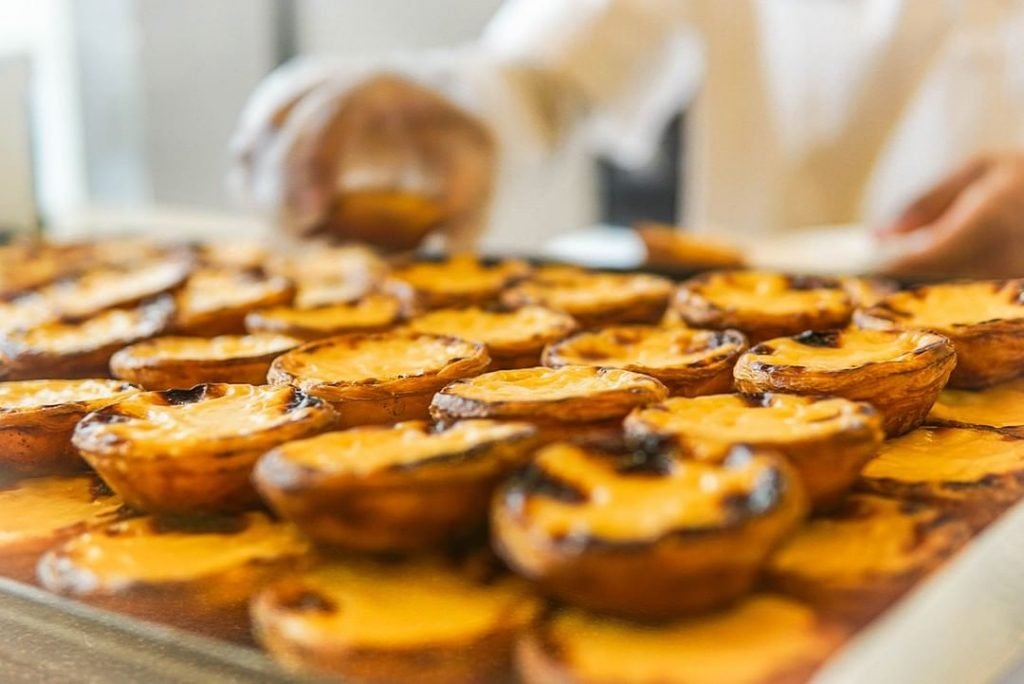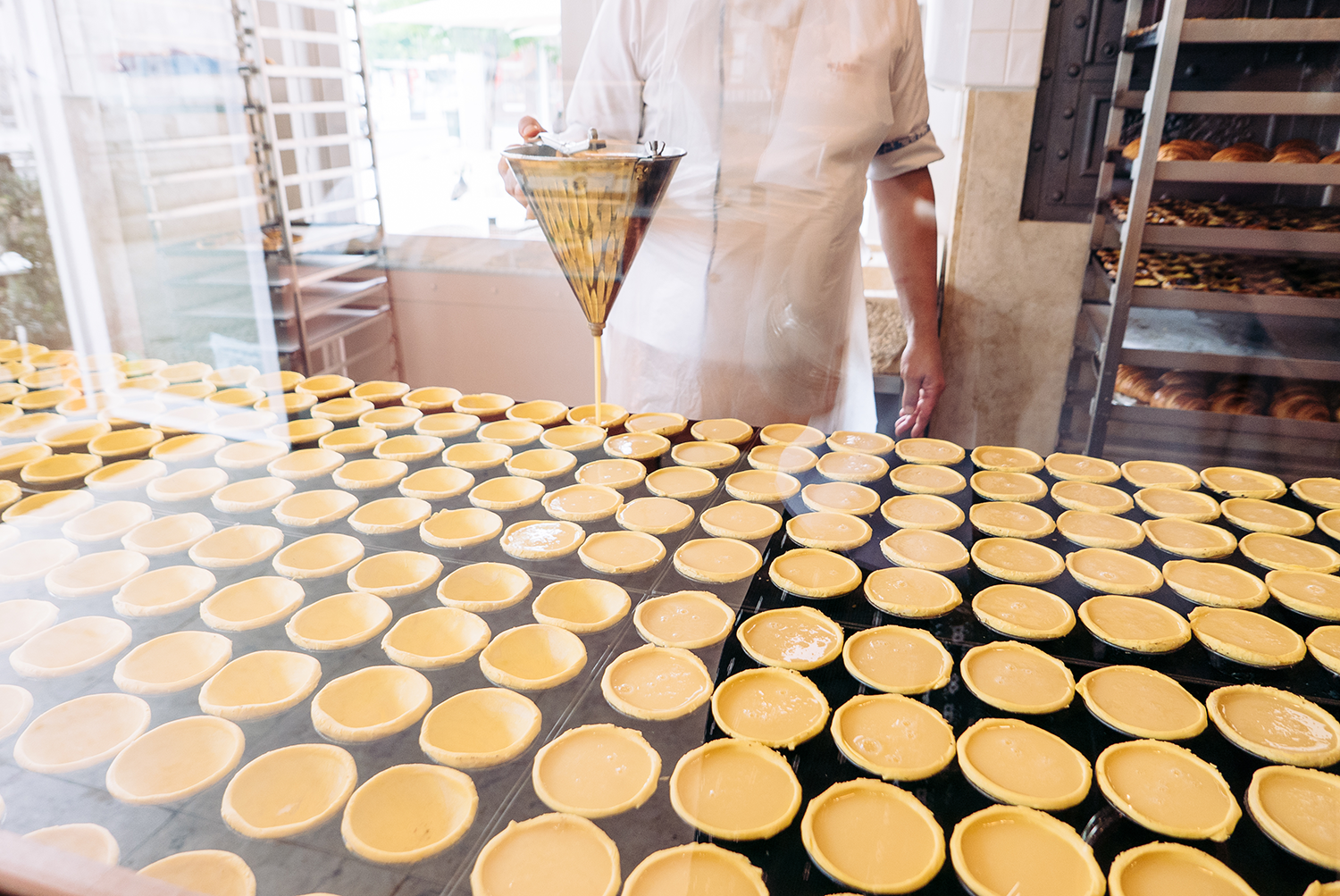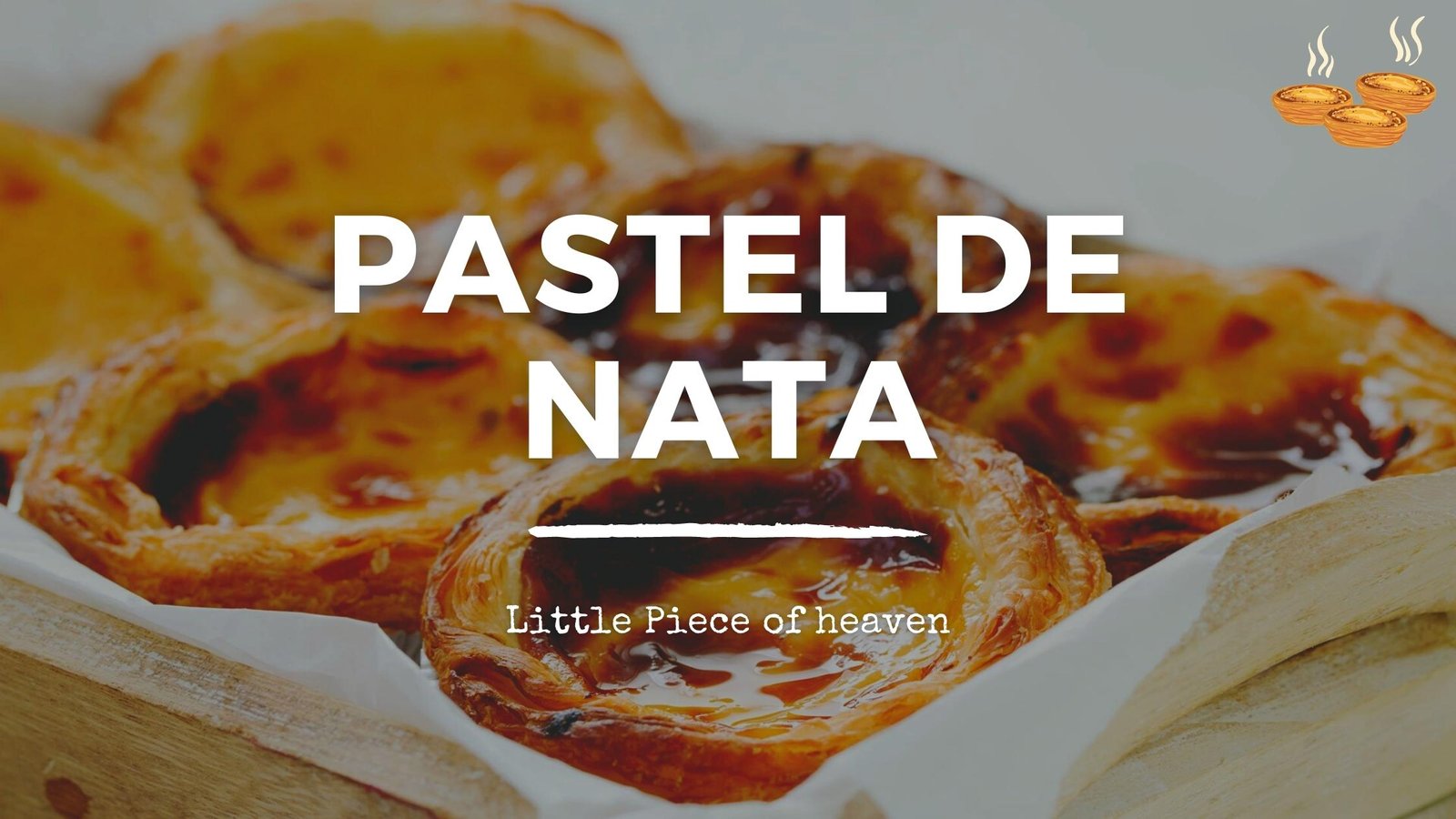More than a national symbol, the famous Portuguese custard tart “Pastel de Nata” is a little piece of heaven…
The history of the Pastel de Nata starts with the first “pastéis de Belém”
Like many other traditional pastries in Portugal, the history of the Pastel de Nata goes back centuries, its origin directly related to the “Pastéis de Belém” which are still made until now.
The first “Pastéis de Belém” date back to the early 19th century. During the liberal revolution, the monks of the Jeronimos Monastery, located in Belém, created the original recipe of the first “pastéis de nata” as a way to ensure their survival. The monks sold the little custard tarts to tourists who arrived by steam boat to visit the monastery and the nearby Torre de Belém.
The “Pastéis de Belém” became so popular that even after the religious orders were expelled from Portugal and the monastery closed in 1834, the monastery’s pastry chef sold the recipe to Domingos Rafael Alves, a Portuguese businessman from Brazil who is responsible for ensuring that the original recipe was able to survive the next two centuries.

During the first few years, the custard tarts were sold in a sugar refinery near the Monastery, but in 1837 the pastry shop “Antiga Confeitaria de Belém” was officially created, leading to the present “Pastéis de Belém” shop which is extremely popular among tourists and the locals.
The original recipe is still made until now and remains the exclusive secret of the Oficina do Segredo (secret workshop) at the Pastéis de Belém factory, the only place where pastéis de nata can receive the trademark “Pastéis de Belém”.
Fun facts about Pastéis de Belém:
– The master pastry chefs of the Oficina do Segredo are the only people who know the secret recipe, and have to sign a contract of responsibility and take an oath to not disclose the recipe.
– Each Pastel de Belém is hand made with artisan processes. Despite the time, quality of the ingredients and the work put into each tart, it only costs 1,10€.
– In 2011, the Pastel de Belém was elected one of the 7 Culinary Wonders of Portugal.
– Every day about 20,000 Pastéis de Belém are sold and during weekends the number can double.
– An old Portuguese proverb says that “a bride who eats a Pastel de Belém will never take off her ring” and so it’s quite common to see newly-wed couples, dressed as brides and grooms, at the most famous bakery in Lisbon.

Where to buy Pastéis de Nata
Although the original “Pastéis de Belém” can only be bought in the pastry shop with the same name located next to the Jerónimos Monastery in Lisbon, you can find pastéis de nata in any café or pastry shop in Madeira, and even in supermarkets. However, the taste varies depending on the recipe and “secrets” of each production site.
Some may argue that the differences are subtle, but you’d be surprised to find out how many Portuguese don’t mind driving for several kilometres just to savour their favourite pastel de nata! Our advice is to try a pastel de nata in different places until you find the variety that pleases your taste buds the most.
Warm, with coffee, simple or sprinkled with cinnamon and icing sugar… there are several ways of savouring this delicious pastry!
How to ask for a Pastel de Natal:
– Singular: pastel de nata / Plural: pastéis de nata
– With cinnamon: pastel de nata com canela (you’ll be handed the cinnamon jar directly so that you sprinkle the amount you want yourself!)
– With an espresso coffee: Um pastel de nata e um café, por favor.

Pastel de Nata recipe
If you are not in Portugal at the moment, you can try making pastéis de nata at home! The ingredients are extremely simple, but getting a perfect Portuguese custard tart does requires some technique!
Although there are countless recipes available, the one below is one of the simplest and a good starting point to try to unlock the “secrets” of this ancient recipe:
Ingredients:
1 package of frozen puff pastry (you can make it from scratch, if you prefer)
1 litre of milk
400 g. of granulated sugar
9 egg yolks
80 g. all-purpose wheat flour
1 lemon peel
1 cinnamon stick
Cinnamon powder (optional)
Flour to sprinkle
Butter to grease
Instructions:
Boil the milk with the cinnamon stick and the lemon peel.
Mix the sugar with the flour and slowly add the milk through a strainer, stirring well afterwards.
Heat again, stirring continuously, remove when the cream is well mixed and allow to cool.
Beat the egg yolks separately and then add them to the cream, stirring constantly.
Roll out the puff pastry on a floured surface. Fold it over and roll over again. With a circle cutter or glass cup, cut circles with the same diameter as the opening of the baking tins.
Grease the tins with butter and line them with a thin slice of puff pastry, stretching it to the edge. To make it easier to stretch the dough, keep your thumbs wet.
Place the tins on a baking tray, and fill each 3/4 full with the cool custard.
Bake in the oven, preheated to 250ºC or more, for about 10 minutes. Depending on your oven, the tops may not brown quite as much as the authentic versions you’ll find here, but they will surely bring you sweet memories of Portugal.
Serve them hot or cold, with or without cinnamon, and most importantly: try not to eat them all… The best things in life are better if they are shared!
Source: Portugal the Simple Life

Comment (0)